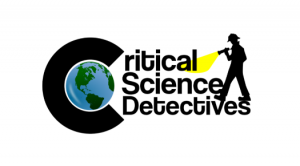
Introduction
Once the mission is accomplished, the students would hopefully have a conclusion or a solution to the problem. However, solving the identified problem is often a difficult process. Completing the critical science detectives missions the student teams must have produced documentation of the long process they worked through – from the first phase of identifying the problem all the way to ‘mission accomplished’.
Your role as a teacher
First of all, some missions will in reality not be fully accomplished, this is not necessarily a failure. Teachers need to make students aware of that any step towards a successful mission is a victory, because the students will probably have learned a lot of science in the process.
Perhaps the students need some guidance in making a conclusion? Between ‘Identify problem’ and ‘solution to problem’ the students have done a lot of investigation. Help the students organize the collected and analysed data, in a way so it is clear that they support the solution to the problem. If there are many possible solutions, help the students in going for a simple one, the one that requires least explanation and is the easiest to present to others in a clear way. Furthermore, help the students to be aware of how to argue for their conclusion, perhaps asking “How strong is your data supporting the conclusion?”
As a teacher, be aware that sometimes during their investigation students will get answers to questions that do not directly contribute to answering their main problem/mission. Students should therefore occasionally be helped to focus their conclusion so that they are actually concluding on what the mission was all about, and not on matters that may not be particularly important in that context.
Before next step
The next step, phase 7, is closely connected to this step/phase, because the next step is to share the solution/communicate the result of the mission to others. Therefore, the students could prepare their data for sharing; what are the main findings? Which data supports the conclusion? etc.
You can read more in the guide